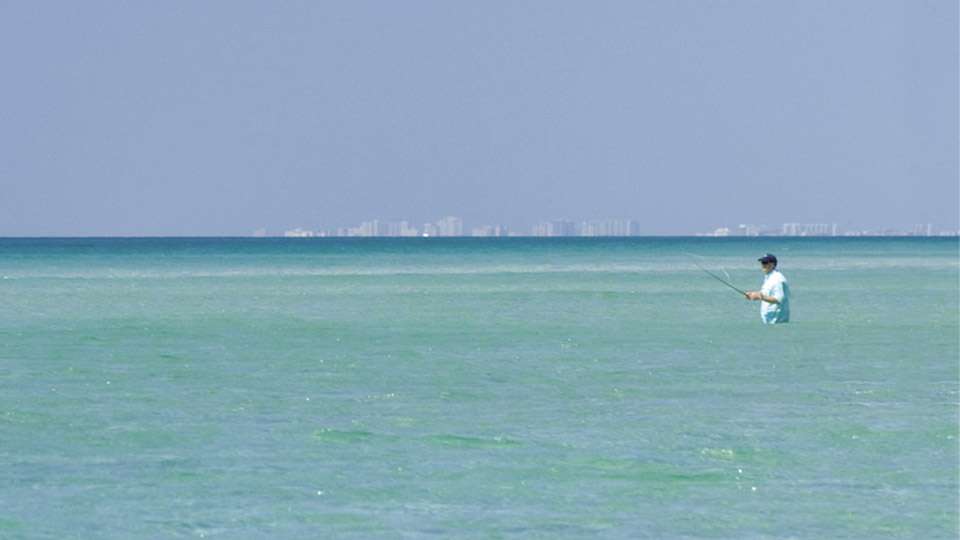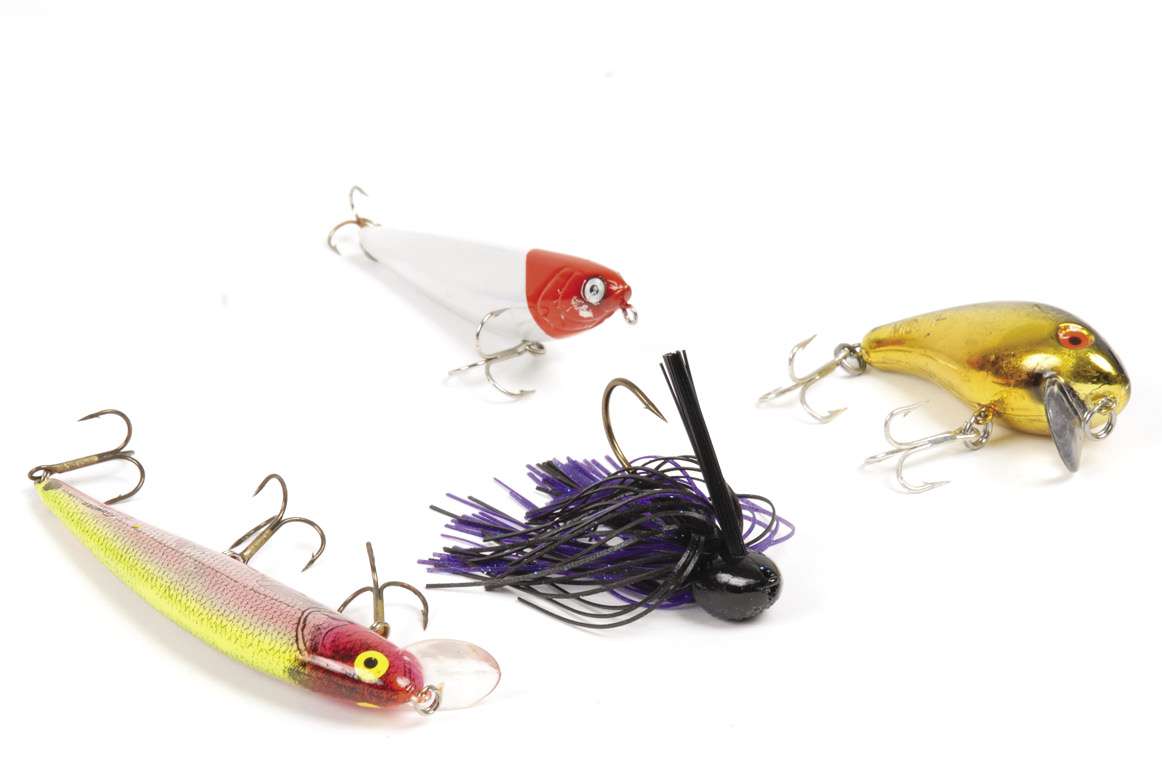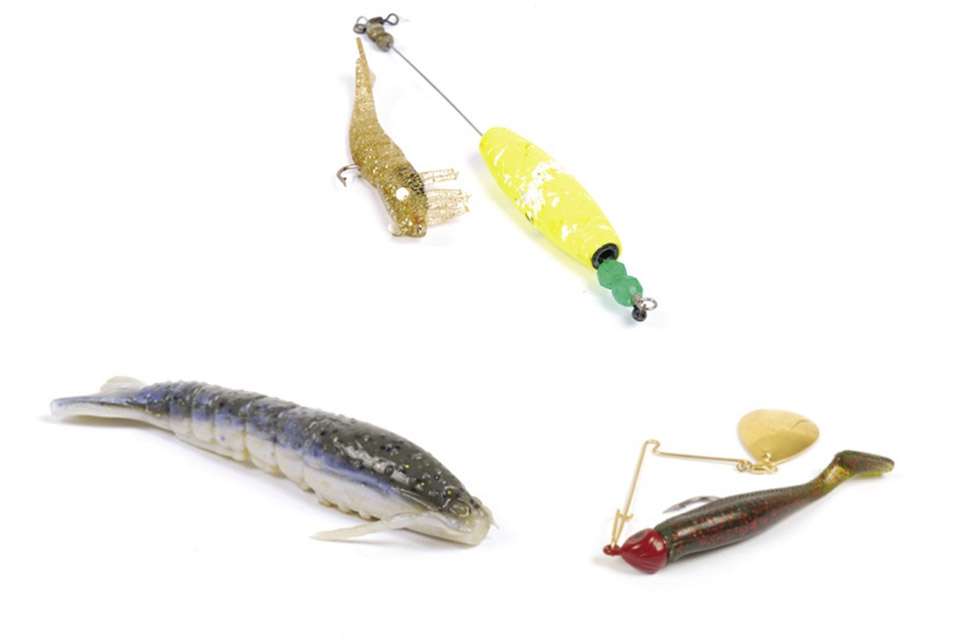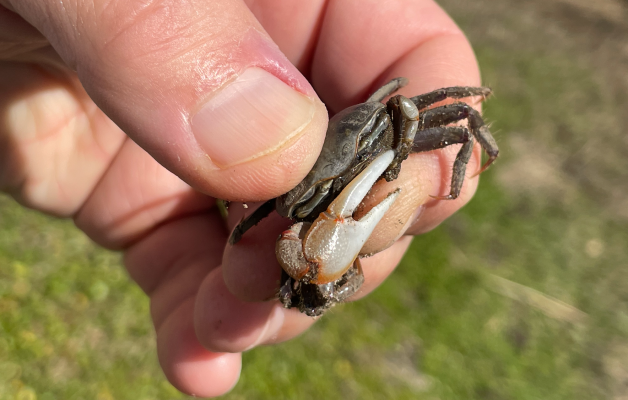
Once the beach toys, swimsuits and sunblock have been packed, remember to load up your bass fishing rods and stock a tacklebox with a few lures. Just because you don’t own saltwater gear doesn’t mean you can’t take advantage of some downtime during your beach vacation by stretching your bass string with some inshore fishing. And unlike bass, most saltwater species will not be as negatively affected by the all-too-dependable February cold fronts.
Whether you book an inshore fishing trip with a guide or visit a tackle store to get tips on hot spots, most bass fishing tackle will do an adequate job on redfish, Spanish mackerel, flounder, speckled trout, bluefish and even small sharks. Medium-heavy baitcasters and spinning outfits will get you through the lion’s share of inshore species. Pack along a heavy action flippin’ stick if you are headed to a locale that boasts monster redfish.
Lure selections also easily cross over from freshwater to saltwater fishing. Throw topwater chuggers or walking baits, such as a Heddon Spook or Pop-R, for speckled trout and redfish. Crankbaits are a good choice for reds, with the Mann’s 1-Minus a popular choice. Speckled trout are goofy for jerkbaits at times, and soft plastic minnow-imitations are killer.
Color selection might require a tweak, although you won’t have to go too far. Natural shad colors — pearl with a black back, or chartreuse with a black or green back — for topwaters and crankbaits will perform. Some anglers prefer specific shades, such as the popular Texas Chicken, or baits with pinks, oranges, limes and purples that have a pattern of dots or lines.

“One of the biggest things to remember, especially if you’re using freshwater lures for saltwater fishing, is to change out the hooks,” says Blake Phillips of Dothan, Ala., who competes on the Oh Boy! Oberto Redfish Cup when he’s not bass fishing. “You need those stronger hooks with redfish because they’re able to straighten out regular hooks.”
Bassmaster Elite Series pro Stephen Browning of Arkansas teamed up with Bassmaster Tour pro Jeff Coble in 2005 to win a Redfish Cup tournament. It was their first redfish event, and they used their freshwater knowledge to win the event off the South Texas coast.
“As far as the actual fishing, we mainly used techniques we use while bass fishing,” Browning said. “We were throwing crankbaits on rocks, using the Mann’s 1-Minus over shallow flats, swimming and flipping jigs and working grasslines, holes and even cuts and laydowns along the banks.”
Saltwater fish, especially redfish and speckled trout, will feed on mullet, pogies, crabs, shrimp and other forage found in shallow areas. A stop-and-go retrieve with a shallow crankbait can turn a redfish’s head in a second. Working the areas on outgoing tides also may improve your chances because the water flushes out crabs and other forage from marshes into open water where fish may be waiting.
One of the top things Browning found to use was a jig, just like he does when pursuing bass.
“One of the better techniques we found was swimming a jig over the grass and letting it drop into the holes in the grass,” he said. “You’d see a big sandy opening and when that jig fluttered down into it, something was going to come out of the edges and get it. I guess the jig imitated a small crab or shrimp. We used a 3/8- or 1/2-ounce jig tipped with a Berkley Gulp Shrimp, and those reds can’t stand that. They flat-out eat it.”
Browning even watched fellow Bassmaster pro Greg Hackney of Louisiana, who is known for his prowess with a jig, work his magic on a redfish.
“Hack saw something that looked good and said he wondered if he could catch a redfish by flipping a jig,” Browning explained. “I told him to take a whack at it, and he zipped that jig in there. Next thing I know, he’s locked up with a pretty good redfish. That’s just straight bass fishing technique right there.”
Zell Rowland of Texas has competed on the Bassmaster circuit for 36 years; but if anything runs a close second to bass fishing, it’s saltwater fishing. During the official practice period prior to the 2003 Bassmaster Classic in New Orleans, Rowland and some of the other competitors were comparing notes about how many redfish they had seen and which was the biggest.
“I think anyone with some sense about how to read grasslines, breaklines, a GPS and a map can do all right with inshore saltwater fishing,” Rowland said. “You also have to know a little something about the tides and not get stuck on a flat for eight or 12 hours until the next tidal change, but there are a lot of similarities between bass fishing and (inshore) saltwater fishing. I love it and look forward to going whenever I get the chance.”

Rowland outfits his saltwater arsenal with All-Star rods and Quantum reels, just like on his bass boat. Browning does the same, opting for St. Croix rods, but with one twist.
“I use the same stuff as I do for bass fishing with one exception: I use Abu Garcia 4600 and 5600WS reels for extra speed,” he said. “Everything else is the same thing I use when I’m bass fishing. This way, I don’t have to get used to a whole new setup, which keeps me casting accurately and ultimately puts more fish in the boat.
“When I’m saltwater fishing, I typically go with a medium action or some kind of moderate action rod and braided line instead of heavy rods,” Browning continues. “That combination really seems to work well for me, especially with crankbaits. You can cast them well, the braid stands up to the conditions and the rod action is strong but forgiving enough to allow me to fight the fish well.”
Editor’s note: Publised in 2007




